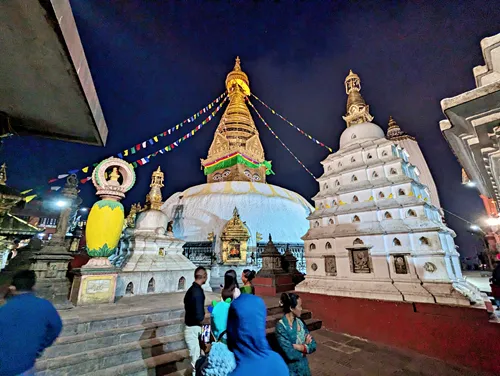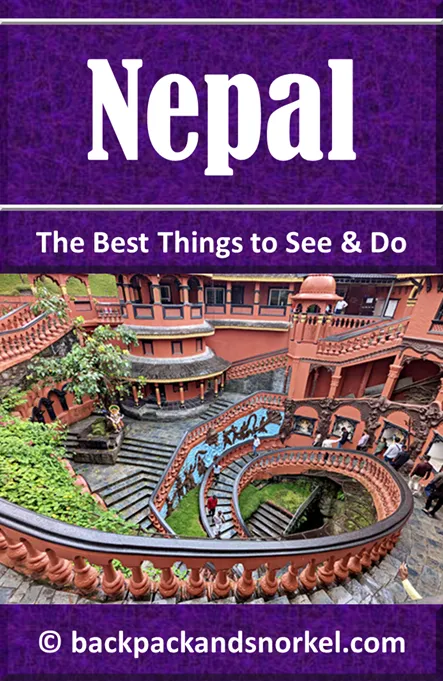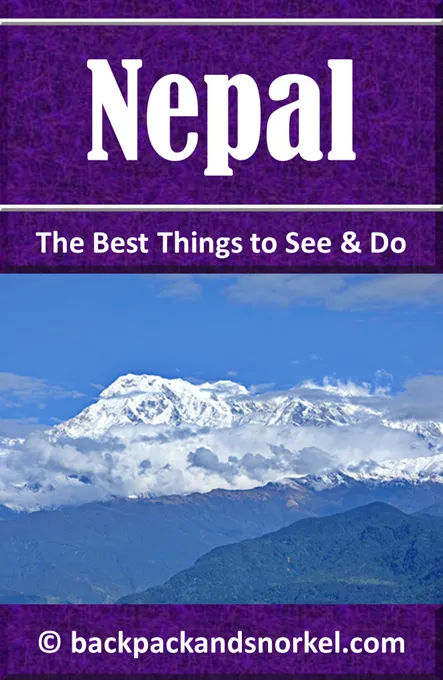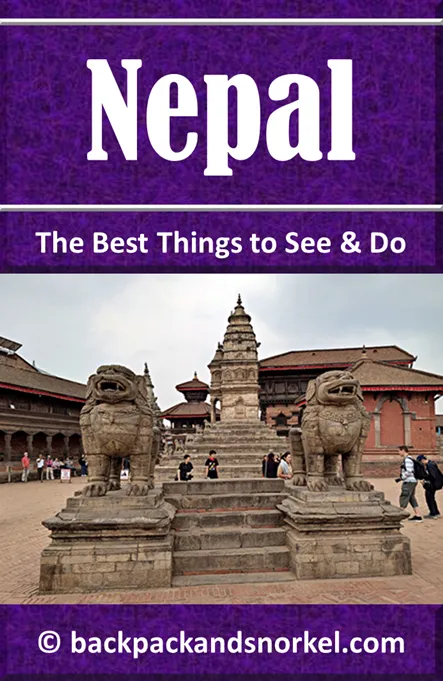Swayambhunath: Unveiling the Mystical Monkey Temple of Kathmandu - Nepal Purple Travel Guide
(map, reviews)
This is Premium Content! To access it, please download our
Backpack and Snorkel Purple Travel GuideThe best way to get to Swayambhunath is by Pathao or inDrive. Just be advised that it can take a while to get a ride back to town from Swayambhunath. But there are usually taxis waiting at the exit, or you can offer 50% or 100% more than you paid to get here on inDrive to get a ride. Remember, you need to pay cash.
General Information about Swayambhunath
Swayambhunath (Swayambhu Mahachaitya) is an important religious complex that was built on top of a hill and therefore has beautiful views over parts of the Kathmandu Valley and also beautiful sunset views.
For the local Newars, Swayambhunath is the most sacred Buddhist pilgrimage site, and for Tibetan Buddhists, it is second after Boudhanath Stupa.




History of Swayambhunath
Swayambhunath was founded by King Vṛsadeva in 640 AD. There is historical evidence that Emperor Ashoka had built a temple on this hill in the third century BC, but the temple was long gone before Swayambhunath was built.
In the 15th century, the stupa had deteriorated and was rebuilt by Indian Buddhist monk and abbot Śāriputra and the King of the Malla dynasty. The site was used by Buddhists and Hindus, and the eastern stairway was added in the 17th century by the Hindu Malla king of Kathmandu, Pratap Malla.
The stupa was significantly renovated 15 times since it was built – the last renovation occurred in 2010 during which it was re-gilded with 44 lbs (20 kg) of gold.
Visiting Swayambhunath
At the time of writing, admission is Rs200 per person, payable in cash (no credit or debit cards) at the small booth at the entrance on the stairs that lead into the complex.
Besides being an important religious complex, tourists like to come here to see the many monkeys that live here.
Be advised that the monkeys may look cute, but you don’t want to feed or interact with them in any way. They are wild animals and are known to steal food, and cause serious bite injuries when you get too close or resist giving up your food. Therefore, if you have food with you: hide it and never consume it in the complex.
Once you get up the stairs you get to the lower part of the religious complex, and here you will likely see the first monkeys, and a stupa. Be advised that this is not the main complex and not the main stupa.
The eyes and eyebrows that you see on the stupa belong to Buddha, and the nose is actually the number 1 in Nepali script, like what you see on Nepali license plates.
After spending a few minutes here, go back to the stairs and walk up to the main complex. Once you reach the top, you have supposedly climbed 365 steps. On the top, you will see the large stupa, various temples, and have a beautiful view of Kathmandu Valley.
The Eyes of the Stupa
Like all stupas in Nepal, the main gold-plated stupa Buddha’s eyes and eyebrows, but the nose is different. Eyes and eyebrows have been painted on stupas since the 16th century, but the reason why this was done is unknown. There is speculation that they may represent guardians who watch the universe in all 4 celestial directions, and not Buddha’s eyes, but people prefer to call them Buddha’s eyes.
Back to your self-guided tour
Author: Rudy at Backpack and Snorkel
Bio: Owner of Backpack and Snorkel Travel Guides. We create in-depth guides to help you plan unforgettable vacations around the world.
Other popular Purple Travel Guides you may be interested in:
Like this Backpack and Snorkel Purple Travel Guide? Pin these for later:





